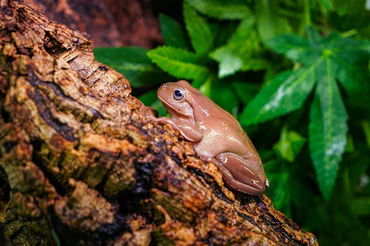When it comes to providing the optimal living space for your slithering friend, the importance of selecting the right Snake Tank cannot be overstated. From size considerations to temperature control, every aspect plays a crucial role in ensuring your snake’s well-being and happiness. Let’s delve into the mastery of creating the ideal snake enclosure for your beloved pet.
Size Matters: Finding the Right Dimensions
Snakes, like any other living creature, thrive in environments that offer ample space for movement. When selecting a snake tank, consider the adult size of your snake species. A general rule of thumb is to choose a tank that is at least twice the length of your snake. This ensures that your serpent companion has enough room to stretch, explore, and exhibit natural behaviors without feeling confined.
Substrate Selection: Mimicking Natural Habitat
The choice of substrate in your snake tank goes beyond aesthetic appeal; it contributes to the overall comfort of your pet. Opt for substrates that replicate your snake’s natural environment, such as aspen shavings, cypress mulch, or coconut coir. The right substrate not only enhances the visual appeal of the enclosure but also helps in maintaining the optimal humidity levels required for your snake’s health.
Temperature Gradient: Regulating the Climate
Snakes are ectothermic, meaning they rely on external sources to regulate their body temperature. Create a temperature gradient within the tank by incorporating heat sources such as under-tank heating pads or heat lamps. This allows your snake to move between warmer and cooler areas, mimicking the natural behavior of basking in the sun and seeking shade.
Hideouts and Enrichment: Fostering Security and Stimulation
In the wild, snakes seek shelter and hide to feel secure. Integrate hideouts and enrichment elements within the tank – artificial caves, branches, and rocks – to create a habitat that aligns with your snake’s natural instincts. These additions not only provide a sense of security but also stimulate mental and physical activity, contributing to a healthier, happier pet.
Water Stations: Hydration is Key
While snakes don’t drink water as frequently as other pets, providing a clean and accessible water station is essential. Ensure that the water bowl is spacious enough for your snake to soak if desired. Regularly check and replenish the water to maintain hygiene, contributing to your snake’s overall well-being.
Ventilation and Lighting: Striking the Right Balance
A well-ventilated snake tank is crucial for maintaining optimal air quality. Choose a tank with adequate ventilation holes to facilitate air circulation. Additionally, consider the importance of lighting. While snakes don’t necessarily require UVB light, providing a natural day-night cycle helps regulate their circadian rhythm, promoting a healthy sleep-wake cycle.
Regular Maintenance: Sustaining a Healthy Habitat
Owning a snake comes with the responsibility of regular maintenance. Schedule routine checks to ensure the tank remains clean and hygienic. Remove waste, shed skin, and any uneaten food promptly. This not only sustains a healthy habitat but also allows you to monitor your snake’s overall health.
Conclusion: Mastering the Art of Snake Tank Selection
Crafting the perfect snake tank involves a meticulous blend of size considerations, substrate choices, temperature regulation, and environmental enrichment. By mastering the art of snake tank selection, you not only provide a secure and comfortable haven for your serpentine companion but also contribute to their overall health and happiness.
Elevate your snake care game by choosing the ideal enclosure for your pet, and witness the joy of a content and thriving snake in a habitat that mirrors the beauty of the wild.














